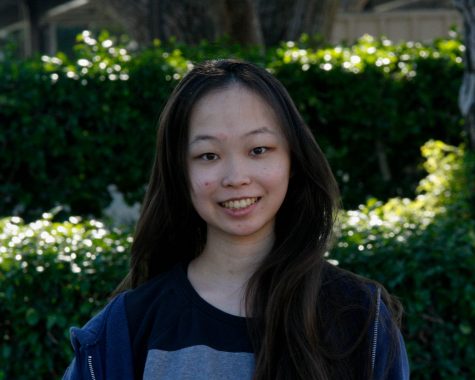November Survey Helps to Identify Students Eligible for AP Courses
December 17, 2019
In order to gauge student accessibility to AP classes identify students to take APs, students took a two-part survey in homeroom on October 21st, which helped and address mental health respectively .
The EOS survey, the latter of the two surveys, featured a series of questions that students answered to help gauge accessibility and recognize possible obstacles regarding AP classes.
“The EOS survey allows kids to identify barriers,” said Assistant Principal Connie Park “[for example a] lack of knowledge regarding options, feelings of not belonging, lack of adult encouragement, etc, and it also allows them to acknowledge strengths of theirs [such as] grit, purpose for learning, academic strategies, etc. that would help them should they ever enroll in an AP class”.
The EOS survey was implemented all across IUSD high schools, with the exception of Portola. Beyond allowing students to recognize obstacles, students’ responses on this survey will be used by administration to identify students who would benefit from placement in an AP class. These students would qualify for placement in an AP class, but opt out of enrolling in one.
Student opinion on the EOS survey has been varied.
“I think statistics determined by this survey will help teachers and school faculty gauge students’ opinions and willingness to take APs,” said sophomore Alissa Kopylova, “and adjust school policy concerning publicity about taking APs or AP help opportunities accordingly”.
The results of this survey seeks to identify and specifically help a certain profile of student.
“I haven’t seen any specific examples of survey results from past years being put into use,” said senior James Chen, “but to be fair, I’m taking different AP classes each year, so it’s like comparing apples and oranges”.
Administration used a basis of six to eight parameters to narrow down the pool of students who took the survey to specifically identify these students.
“The survey information— combined with data pulled from other entities— allows us to see who may be a good fit for taking one AP next year or in the future,” Park said.
The students identified by the EOS survey last year are currently placed into classes that they would be a good fit for. Teachers are aware of these students in their classes, and administration has followed up on their progress in their classes.
Follow up conversations with EOS identified students this year will occur after administration has narrowed the pool of surveyed students, to encourage them to take AP classes they have qualified for.
The next steps in implementing these programs would be identifying students that would benefit from the EOS survey and for future years, the EOS survey will continue to assist underrepresented students.




